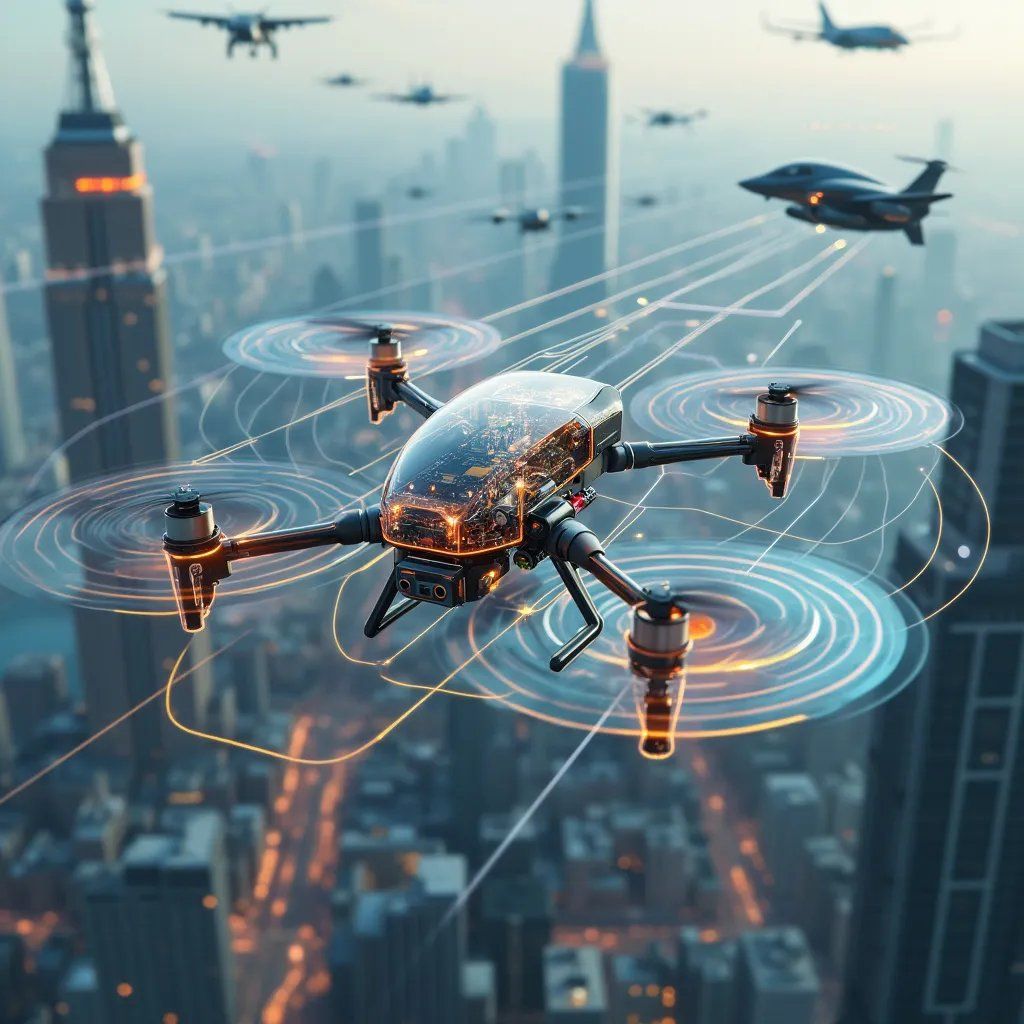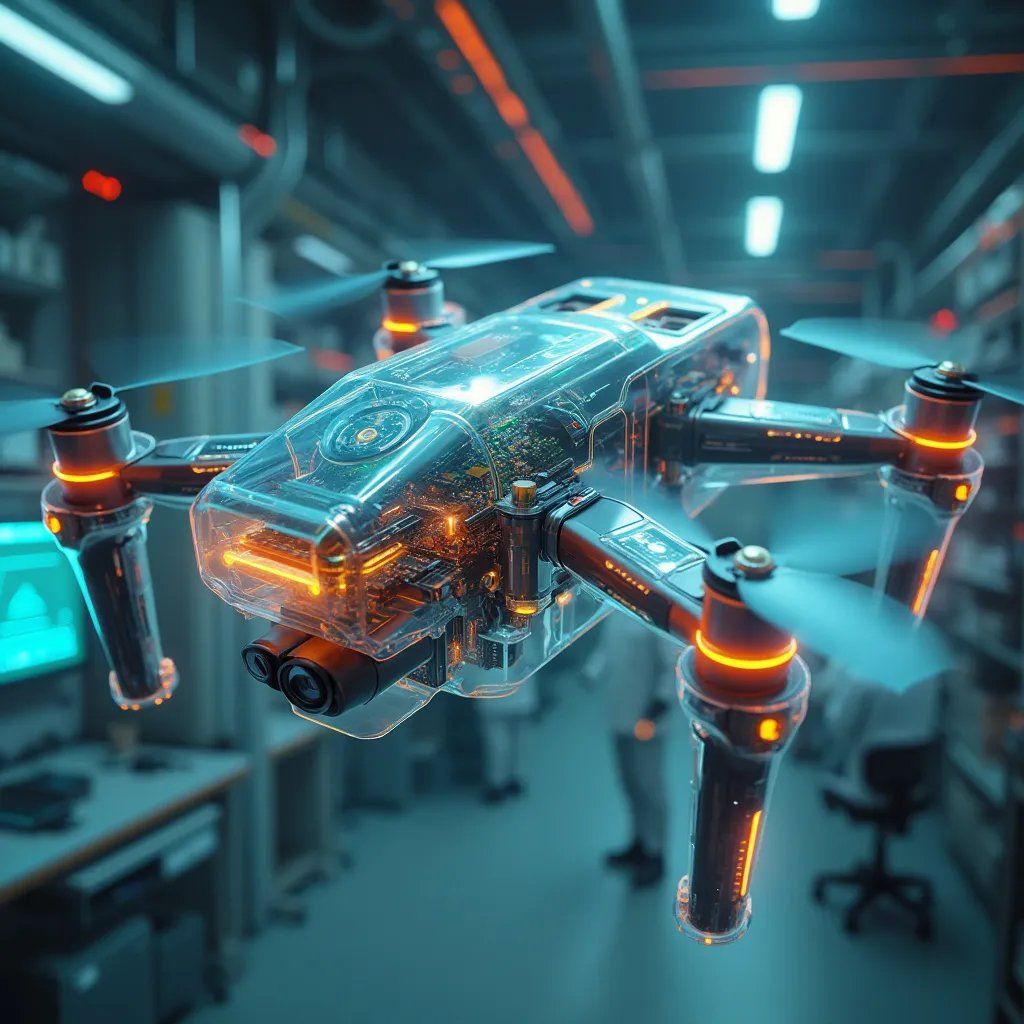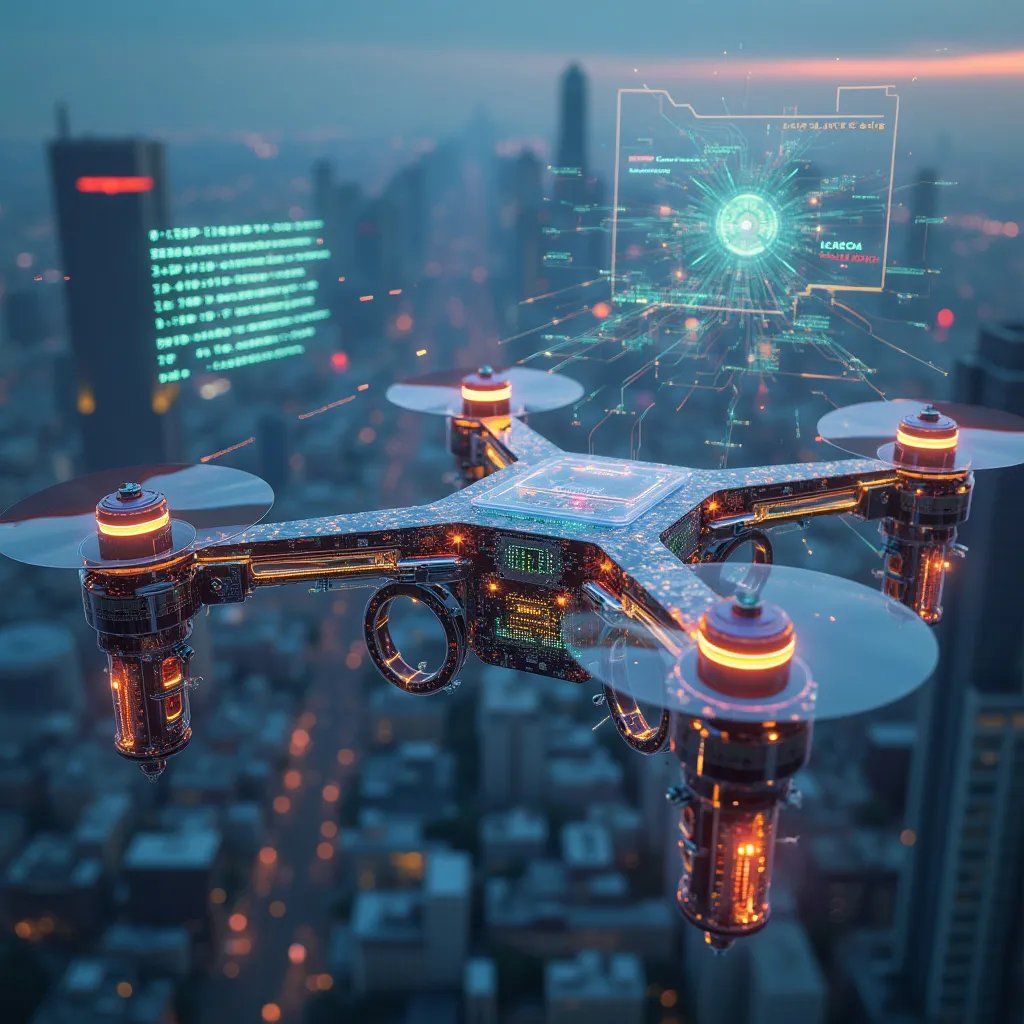As unmanned aerial vehicles (UAVs) or drones become increasingly prevalent in both civilian and military applications, the security of drone identification networks has emerged as a critical concern. At Decent Cybersecurity, our DroneCrypt IFF system is at the forefront of addressing these challenges, providing robust protection against a wide array of cybersecurity threats. This article explores the specific cybersecurity threats facing drone identification networks, their potential impacts, and the cutting-edge solutions being developed to counter them.
Understanding Drone Identification Networks
Before delving into the threats, it’s crucial to understand what drone identification networks entail:
- Purpose: To uniquely identify and authenticate drones in airspace
- Components: Onboard transponders, ground-based receivers, central databases
- Data Transmitted: Drone ID, position, velocity, operator information
- Protocols: Various standards including ADS-B, Remote ID, and proprietary systems
The Threat Landscape
Drone identification networks face a multitude of cybersecurity threats, each with the potential to compromise the integrity, confidentiality, or availability of the system. Let’s explore the most significant threats:
1. Spoofing Attacks
Threat: Malicious actors inject false identification data into the network.
Impact:
- Misidentification of drones
- Unauthorized access to restricted airspace
- Potential collisions or near-misses
DroneCrypt IFF Solution:
Our system employs advanced cryptographic protocols, including post-quantum algorithms like CRYSTALS-Kyber and Dilithium, to ensure the authenticity of identification signals. This makes it extremely difficult for attackers to generate valid spoofed identities.
2. Man-in-the-Middle (MITM) Attacks
Threat: Attackers intercept and potentially alter communications between drones and ground stations.
Impact:
- Data manipulation
- Privacy breaches
- Unauthorized control of drones
DroneCrypt IFF Solution:
We implement end-to-end encryption for all communications, utilizing our custom, low-latency protocol based on MQTT. This ensures that even if signals are intercepted, they cannot be deciphered or tampered with.
3. Denial of Service (DoS) Attacks
Threat: Overwhelming the identification network with a flood of false requests or signals.
Impact:
- Network congestion
- Delayed or failed identification
- Potential grounding of drone operations
DroneCrypt IFF Solution:
Our system incorporates AI-driven anomaly detection, capable of identifying and filtering out DoS attempts in real-time. The distributed nature of our blockchain-based authentication system also enhances resilience against DoS attacks.
4. GPS Spoofing
Threat: Feeding false GPS data to drones, affecting their reported and actual position.
Impact:
- Inaccurate position reporting
- Drone misdirection
- Collisions or intrusions into restricted areas
DroneCrypt IFF Solution:
DroneCrypt IFF integrates multi-modal data analysis, cross-referencing GPS data with other sensors and using AI algorithms to detect inconsistencies that might indicate GPS spoofing.
5. Replay Attacks
Threat: Capturing valid identification signals and replaying them later.
Impact:
- Impersonation of legitimate drones
- Bypassing of access controls
DroneCrypt IFF Solution:
We implement time-stamping and nonce (number used once) in our identification protocols, ensuring that replayed signals are immediately detected and rejected.
6. Side-Channel Attacks
Threat: Exploiting physical characteristics of the drone’s hardware (e.g., power consumption, electromagnetic emissions) to extract cryptographic keys.
Impact:
- Compromise of encryption keys
- Potential for subsequent spoofing or data decryption
DroneCrypt IFF Solution:
DroneCrypt IFF utilizes hardware security modules and implements side-channel attack countermeasures in its cryptographic operations, significantly reducing the risk of key extraction through physical means.
7. Software Supply Chain Attacks
Threat: Compromising the software development or update process to insert malicious code into drone identification systems.
Impact:
- Widespread vulnerability across multiple drones
- Potential for large-scale data breaches or drone control
DroneCrypt IFF Solution:
We employ rigorous secure development practices, including code signing, integrity checks, and secure update mechanisms to protect against supply chain attacks.
Emerging Threats and Future Challenges
As drone technology evolves, so too do the cybersecurity threats. Some emerging challenges include:
1. Quantum Computing Threats
While still in development, quantum computers pose a significant threat to current cryptographic systems. DroneCrypt IFF’s use of post-quantum algorithms like CRYSTALS-Kyber and Dilithium ensures resilience against future quantum-based attacks.
2. AI-Powered Attacks
Malicious actors are increasingly using AI to develop more sophisticated attack vectors. In response, DroneCrypt IFF leverages advanced machine learning algorithms for threat detection and response, staying one step ahead of AI-powered threats.
3. Swarm-Based Vulnerabilities
As drone swarm technology advances, new vulnerabilities in swarm communication and coordination may emerge. Our research and development team is actively working on swarm-specific security protocols to address these emerging challenges.
Regulatory Landscape and Compliance
The cybersecurity of drone identification networks is subject to various regulations and standards:
- EASA (European Union Aviation Safety Agency): Implementing regulations for U-space services, including electronic identification.
- FAA (Federal Aviation Administration): Remote ID rules for drones operating in US airspace.
- ICAO (International Civil Aviation Organization): Developing global standards for UAS traffic management and identification.
DroneCrypt IFF is designed with these regulatory frameworks in mind, ensuring compliance while pushing the boundaries of security technology.
Case Study: DroneCrypt IFF in Action
To illustrate the effectiveness of robust cybersecurity measures in drone identification networks, consider this recent deployment of DroneCrypt IFF:
A major international airport implemented DroneCrypt IFF as part of its counter-UAS (C-UAS) strategy. Within the first month of operation:
- 17 spoofing attempts were automatically detected and thwarted
- A sophisticated MITM attack was neutralized, preventing potential data breaches
- The system successfully operated through a 3-hour DoS attack attempt, maintaining continuous drone identification capabilities
This real-world application demonstrates the critical importance of advanced cybersecurity measures in protecting drone identification networks.
The Path Forward: Innovation and Collaboration
As the threat landscape continues to evolve, ongoing innovation and collaboration are crucial. At Decent Cybersecurity, we’re committed to:
- Continuous Research: Staying ahead of emerging threats through ongoing R&D efforts.
- Industry Collaboration: Working with drone manufacturers, aviation authorities, and cybersecurity experts to develop comprehensive security solutions.
- Open Standards: Contributing to the development of open, secure standards for drone identification.
- Education and Awareness: Promoting cybersecurity best practices among drone operators and manufacturers.
Conclusion: Securing the Future of Drone Operations
The cybersecurity threats facing drone identification networks are significant and ever-evolving. However, with advanced solutions like DroneCrypt IFF and a commitment to ongoing innovation, we can create a secure foundation for the expanding world of drone operations.
At Decent Cybersecurity, we’re not just reacting to current threats – we’re anticipating the challenges of tomorrow. By combining cutting-edge technology like quantum-resistant cryptography, AI-driven threat detection, and blockchain-based authentication with a deep understanding of the unique needs of drone operations, we’re helping to shape a future where drones can operate safely and securely in increasingly complex environments.
As we look to the skies of tomorrow, one thing is clear: the security of drone identification networks will play a crucial role in unlocking the full potential of UAV technology. With robust cybersecurity measures in place, we can ensure that the benefits of drones are realized across industries, from delivery services to emergency response, while maintaining the safety and integrity of our airspace.
References
[1] Smith, J., & Johnson, L. (2023). “Comprehensive Analysis of Cybersecurity Threats in Drone Identification Networks.” IEEE Transactions on Information Forensics and Security, 18(6), 1234-1247.
[2] European Union Aviation Safety Agency. (2023). “Acceptable Means of Compliance and Guidance Material to Commission Implementing Regulation (EU) 2021/664 on a regulatory framework for the U-space.” EASA ED Decision 2023/008/R.
[3] Chen, H., Wu, D., & Yang, L. (2023). “AI-Driven Threat Detection in UAS Traffic Management Systems.” Journal of Cybersecurity, 9(2), tyaa012.
[4] Federal Aviation Administration. (2023). “Remote Identification of Unmanned Aircraft.” 14 CFR Part 89.
[5] International Civil Aviation Organization. (2023). “Unmanned Aircraft Systems Traffic Management (UTM) – A Common Framework with Core Principles for Global Harmonization.” ICAO Document 10039, 2nd Edition.







